Land Invertebrates
Media
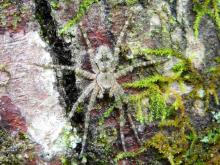
Species Types
Scientific Name
Dolomedes albineus
Description
Whitebanded fishing spiders are often seen on tree trunks, walls, or other vertical surfaces, sometimes far from water. The coloration and markings can vary, but many individuals have an olive-green cast that helps them blend in with mosses and lichens. Note the bristly legs.
Media
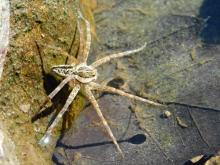
Species Types
Scientific Name
Dolomedes scriptus
Description
The striped fishing spider feels vibrations on the water surface to detect the movements of prey, then skates across the water to grab and subdue it. Like most other fishing spiders, it can also go underwater to capture small fish and other small aquatic animals.
Media

Species Types
Scientific Name
About 2,000 species in North America north of Mexico
Description
Plant bugs, or mirids, are a huge family of true bugs. They are often overlooked — except by gardeners and farmers. Most mirids eat plants, and some are agricultural pests. As a group, they’re an important food source for birds and other insectivores.
Media

Species Types
Scientific Name
Schistocerca spp.
Description
About six species of bird grasshoppers occur in Missouri. Most are attractively marked, large insects that gracefully fly from danger, almost like birds.
Media

Species Types
Scientific Name
Acanthepeira stellata
Description
Mature female starbellied orbweavers spin wheel-shaped webs in prairies and other open, sunny habitats. The abdomen is decorated with a crown of spines and usually has a star pattern on the back.
Media
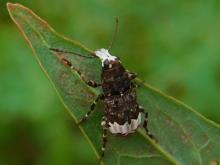
Species Types
Scientific Name
About 120 species in North America north of Mexico
Description
Fungus weevils are a family of beetles that differ from other weevils by their broad, flat bills and clubbed, but not elbowed, antennae. It's a diverse group, but many do feed on bracket mushrooms and other fungi.
Media
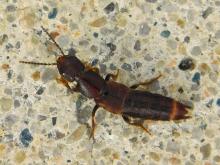
Species Types
Scientific Name
More than 4,400 species in North America north of Mexico
Description
Rove beetles usually have very short wing covers, so several of their hind abdominal segments are exposed. Typically fast movers, they often flip up their abdomen tips when frightened. This is a huge family of beetles.
Media
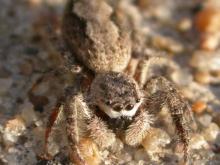
Species Types
Scientific Name
Platycriptus undatus
Description
The tan jumping spider usually lives on tree trunks. Its gray, tan, and brown coloration camouflages it against tree bark. There is usually an undulating pattern on the abdomen.
Media
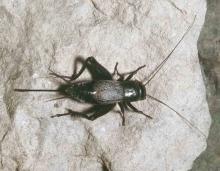
Species Types
Scientific Name
Gryllus spp., Acheta domesticus, and others in subfamily Gryllinae
Description
Field crickets and house crickets are celebrated singers. There are several species in Missouri.
Media

Species Types
Scientific Name
About 30 species in North America north of Mexico
Description
Members of the pygmy grasshopper family are small and have a distinctively elongated pronotum — this plate, which only covers the shoulders of most other grasshoppers, extends back to cover the abdomen in this family. Most live along streams and in other wet habitats.
See Also



Media

Species Types
Scientific Name
Cisseps fulvicollis
Description
The yellow-collared scape moth is more often “orange-collared.” And whether you think it looks more like a firefly or a wasp, it’s still a moth!
Media

Species Types
Scientific Name
Nearly 150 species in North America north of Mexico
Description
Slim, delicate plume moths are instantly recognizable by their T-shaped silhouette, long legs, and muted shades of tan and brown. It can be hard to separate the various species.
Media

Species Types
Scientific Name
Pyrrharctia isabella
Description
Not many people know the adult Isabella tiger moth when they see one, but we’re all acquainted with its caterpillar, the woolly worm, or woolly bear.
About Land Invertebrates in Missouri
Invertebrates are animals without backbones, including earthworms, slugs, snails, and arthropods. Arthropods—invertebrates with “jointed legs” — are a group of invertebrates that includes crayfish, shrimp, millipedes, centipedes, mites, spiders, and insects. There may be as many as 10 million species of insects alive on earth today, and they probably constitute more than 90 percent all animal species.





















